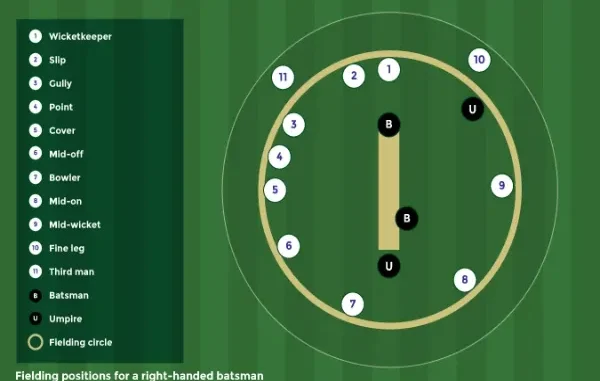
The advantages of Artificial Intelligence are simply too powerful to ignore. Hence, it’s no surprise that industries worldwide are adopting it to improve efficiency and gain a competitive edge. One sector that has seen undeniable transformations via AI adoption and integration in the last few years is sports. The speed and precision that the technology offers and its ability to process and analyze oceans of data and patterns in ways that human brains simply can’t are huge advantages that the sports industry is capitalizing on today.
Sports, at its core, is all about fine margins. One second too slow, one-degree off angle, or one substitution made too late; those tiny differences can change everything. That’s where AI shines, providing actionable insights that enhance decision-making, reduce human error, and optimize performance.
This article discusses five impactful applications of Artificial Intelligence in the sports section. Let’s dive right in!
Sports Officiating
In the past, officiating relied entirely on human judgment. Every call and decision on the field or court came down to what the officials saw or thought they saw in real time. As you might have guessed, that left much room for human error, missed calls, and some seriously controversial moments that fans still argue about years later.
With AI, human error is now being minimized and, in some cases, nearly eliminated. It’s not perfect yet, but we’re heading toward a future where questionable calls are a thing of the past. A popular use case is the VAR system in football (soccer), which uses AI-assisted cameras to assess offside decisions within millimeters. While in cricket, ball-tracking technology like Hawk-Eye and UltraEdge has been helping umpires make more accurate decisions. This increased accuracy provides greater confidence and fairness for players, fans, and bettors. You can check out the best cricket rate for your wagers here.
Player/Athlete Performance and Training
Coaches have always relied on intuition, years of experience, and sometimes loads of spreadsheets to analyze performance, plan training, and make game-time decisions from these analyses. With AI, these processes are now faster, more efficient, and deeply data-driven. This allows coaches to access and uncover insights that would otherwise remain hidden and make real-time adjustments with better precision.
Below are ways through which AI is being used to enhance player training and performance:
- Wearables: These are smart devices like fitness trackers, GPS vests, or biometric sensors, worn by athletes to collect real-time data on heart rate, speed, movement, fatigue levels, and even sleep quality. AI can take data from these wearables, analyze it, and turn it into meaningful, personalized insights that help optimize training, prevent injuries, and boost overall performance.
- Video analysis: Video analysis isn’t new in sports, but AI takes it to the next level. Instead of replaying footage and drawing circles around players, AI can conduct more in-depth and detailed analysis. It can gather valuable data like inefficient movements and imbalances, and suggest real-time corrections.
- Smart AI-Integrated Training Equipment: Traditional training equipment has been effective for years and still gets the job done. However, AI-integrated equipment takes training a step further because it adapts to an athlete’s performance in real time. It can track an athlete’s form, adjust resistance or difficulty in real time, and provide instant feedback on technique.
Scouting and Recruitment
Artificial Intelligence is also valuable in sports scouting and recruitment. It can break down a player’s stats to identify their strengths, weaknesses, and overall potential. This gives scouts and coaches deeper, data-driven insights when deciding who to bring onto a team.
AI is also effective for performance prediction. Comparing a player’s data with past athletes who have similar profiles can help estimate factors like injury risk, growth trajectory, and even when that player is likely to hit their peak.
Game Strategy and Tactics
Coaches can now apply AI not just for training but also for game preparation and even real-time decision-making during matches. With AI, managers can analyze various stats, data, and video footage with more detail. This level of detailed analysis helps uncover patterns, weaknesses in the opponent’s strategy, and opportunities that might otherwise go unnoticed. Coaches can then make smarter tactical calls based on these insights.
For example, in football, a coach preparing for a match against a team can use AI to analyze hours of footage and data to pinpoint exactly when and where the opponent tends to break down. The system might highlight that the opposing left-back often drifts out of position around the 60th minute, creating a vulnerability on that side. With this insight, the coach could instruct their right winger to exploit that space or bring on a pacey attacker to take advantage.
Fan Engagement and Experience
AI is also changing the game for fans, reshaping how matches are presented and experienced, whether they’re watching from the stadium or their couch. Features like real-time stats and on-the-spot analysis layered over instant replays give fans a deeper and more interactive understanding of what’s happening on the field.
AI is also taking the in-stadium experience to the next level. For starters, AI-powered facial recognition and smart ticketing systems have been used to speed up stadium entry, which reduces long lines at the gate. Some stadiums also use AI-driven crowd monitoring to manage foot traffic, helping fans get to their seats faster and reducing congestion in busy areas.
Conclusion
Like in many other industries, AI is integrating itself into sports more deeply than ever, and the results so far have been overwhelmingly positive. From enhancing performance analysis to improving officiating accuracy and enriching fan engagement, the benefits are transformative in several areas of the industry. As this technology matures and advances, its influence on sports will only deepen, reshaping how sports are played, managed, and experienced.






Leave a Reply